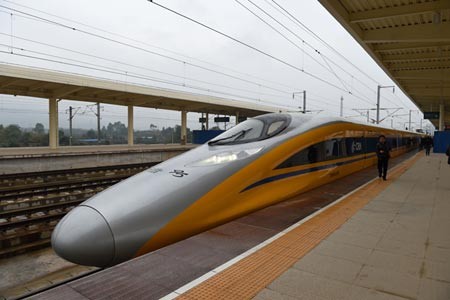On Dec. 21, Sunday, the construction of China's first high-speed railway that runs through the country's southwest karst region was completed.
The railway, which measures 857 kilometers, links Guiyang, the capital of the landlocked mountainous province of Guizhou, and China's south economic powerhouse Guangzhou. By Dec. 26, Friday, the railway is expected to start its operations.
Guizhou was inducted as a UNESCO World Heritage site in 2007 and has the world's most typical karst plateau landscape. Karst topography is a landscape formed from the dissolution of soluble rocks such as limestone.
Zhang Jianbo, general manager of the Guiyang-Guangzhou High-Speed Railway Co., said that the railway "stretches through the complicated karst clusters, the railway had half of its length run through 238 tunnels, two of which are more than 14 kilometers long."
The drill through the two longest tunnels took builders four years to complete. Challenges to the drilling and building were oftentimes disrupted by breaking rocks, rupture of strata and water infiltration.
To reduce the vibration when a train travels 250 km/hour, the construction company applied six national patents adopted to their shockproof technology when it runs through mountains.
Wang Mengshu, a tunnel expert with the Chinese Academy of Engineering, said that the development of the Guiyang-Guangzhou high-speed railway is a representation of China's new generation of innovation in tunnel engineering.



























